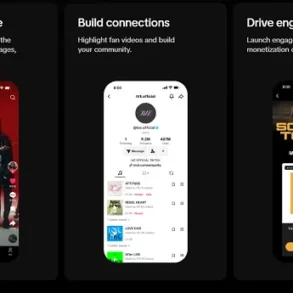
Last summer, a Cardi B fan shelled out $96,000 in an auction to buy the microphone that the controversial rapper threw at the audience during a concert. Nor far behind is the more than $50,000 a tutu that Sarah Jessica Parker wore in Sex and the City recently fetched. There is little doubt that many of Taylor Swift’s fans would happily part with a similar amount for anything that had belonged to the pop superstar. Swifties, as her fans call themselves, stand for hours and hours in line at her concerts bearing all kinds of merchandise, from bracelets to saint cards with the artist’s face on them, as if she were a messiah. But fans’ support for their favorite artists can go far beyond shopping, extravagance, and economic waste. Sometimes they go to great lengths to share their interest in their idols with the world.
Being a fan can be a full-time job and there is proof of this in the accounts that proliferate in the digital universe, profiles with solid communities of followers that in many cases reach tens of thousands of people. Constantly updated, they follow the movements of their favorite stars practically in real time. Such accounts are part of the unofficial gear of publicists’ and agents’ strategies. In fact, in many cases, they are followed in return by the celebrity to whom they are paying tribute, something that could be interpreted as approval from the artist as to the content published.
Rebeca Antolín Prieto, a specialist in information sciences and lecturer in the Department of Applied Communication Sciences at the Complutense University of Madrid, underlines the potential of fan accounts as a tool for strengthening personal brand image: “It is crucial to recognize the positive impact that these profiles can have in building a celebrity’s personal brand image. Not only do they serve as platforms for the expression of admiration, but they also consolidate a loyal community that projects a positive image and constant endorsement, thus contributing to the public perception of the celebrity.”
The new fan club
Such is the case of the profile @styleofrosalia, which has more than 23,000 followers on Instagram and is dedicated to analyzing every one of Catalan singer Rosalía’s outfits. The tracker of the artist’s wardrobe is María, a 21-year-old fashion student, who opened the account in November 2018 with the aim of sharing various types of content about Rosalía, although she finally focused on the clothing aspect. She has another account dedicated to Rosalía’s ex-partner, the singer Rauw Alejandro (Fan Page Style Closet Rauw). “There are almost no clothing updates for male reggaeton artists,” she says. Regarding the number of hours dedicated to the profile on the artist, from which she does not glean any financial compensation, she says that how busy she is “depends on the week.” “Normally, it can be 21 hours a week easily, or even more.”
Olga, 27, dedicates about the same amount of time to her profile focused on the Spanish royal family (@spain_royal). In two years, the Italy-based Russian has built a community of more than 152,000 followers worldwide. Stemming from her interest in the monarchy, she says she started “looking for information about the Spanish Royal Family in Russian, but it was quite limited. And there was a lot of false information.” As such, she decided to launch her own account and learned Spanish to reach Spanish-speaking fans as well. Currently, she spends several hours a day updating the account: “It depends on the day and whether the royal family have engagements or not. It also depends on my mood: sometimes I get inspired and spend hours creating new content.” On average, she spends about three hours a day on the site, sometimes more. “I like it,” she says.
The people behind these accounts not only give extra visibility to every public appearance of their idols, they also manage to keep the name of the celebrities they share content about in the digital conversation. The fact that the artists themselves often interact with them is evidence of their favorable attitude towards these profiles, a new version of the traditional fan club with global reach. In fact, in the case of @styleofrosalia’s María, the singer’s team even invited her to attend the Motomami Tour. You don’t have to dive too deep to come across memes, photos, or videos created by fans on social networks — turning them directly into content creators — that also reach a high degree of virality. “This not only broadens visibility, but also creates a multiplier effect by reaching new audiences. This phenomenon can generate a substantial increase in the celebrity’s fame, reinforcing their status in the entertainment world,” says Prieto.
Exacerbated mythomania sometimes tips the balance in the other direction. On occasions, artists have seen their own fans cross certain red lines. The most notorious example took place last year when Selena Gomez’s fans orchestrated a campaign of harassment on social networks against model Hailey Bieber after she began a relationship with her now-husband Justin Bieber, Gomez’s teenage boyfriend. There were even death threats. Gomez herself publicly stepped forward to ask her fans to stop. In this regard, it seems clear that fan accounts can also have a negative impact. As Prieto points out: “If false information is spread, harmful behavior is engaged in, or controversy is irresponsibly stirred up, it could affect the celebrity’s reputation.”
Sign up for our weekly newsletter to get more English-language news coverage from EL PAÍS USA Edition
This post was originally published on this site be sure to check out more of their content








